In-Ear Monitors: What You Need to Know
Get started with the biggest thing in live monitoring since the wedge!

The idea of going wireless on stage has been around for many years. Wireless microphones and guitar transmitters let performers wander the stage with complete freedom, without the limitation of cables holding them down. But what about the other end of the audio chain? Is there a real benefit to using wireless in-ear monitors over the usual monitor speakers and wedges?
The answer is clear: Yes, there are many benefits! Using in-ear monitors (IEMs) reduces or eliminates a number of problems with live stage sound that many musicians have always assumed they’d just have to live with.
Here are a few of the advantages of IEMs:
- While stage monitors need to be very loud to be heard over the noise of the PA and venue (and bleed into every onstage mic as a result), IEMs eliminate the problem of stage monitor feedback.
- With IEMs, it’s much easier to customize each performer’s monitor mix, so they hear exactly what they want to hear in exactly the right blend.
- A complete IEM setup, with all of the transmitters set up in a rack, is far smaller, more portable, and easier to set up than stage monitors.
- Because IEMs seal tightly in the ear canal, they require only a tiny amount of power to give the musician everything they need to hear – with the added benefit of greatly attenuating the noise of the venue, making it easier for the musicians to hear what’s going on.
- Perhaps most importantly of all in the long run: because IEMs are effective at lower levels and seal out noise, musicians can hear without having to constantly turn everything up. That takes a major role in preserving hearing that otherwise takes a beating in loud venues.
For a long time, wireless IEMs were considered luxury items that you’d only see on stage with major touring artists or on music awards shows. Nowadays, IEM systems are far more affordable than they used to be, all without sacrificing reliability or sound quality – and that places them within reach of any band or live sound company, no matter how small. If you’re an engineer or live sound tech working with a band, or if you’re a band member who has to do the engineering as well, here’s what you need to know to bring IEMs into your musical world.
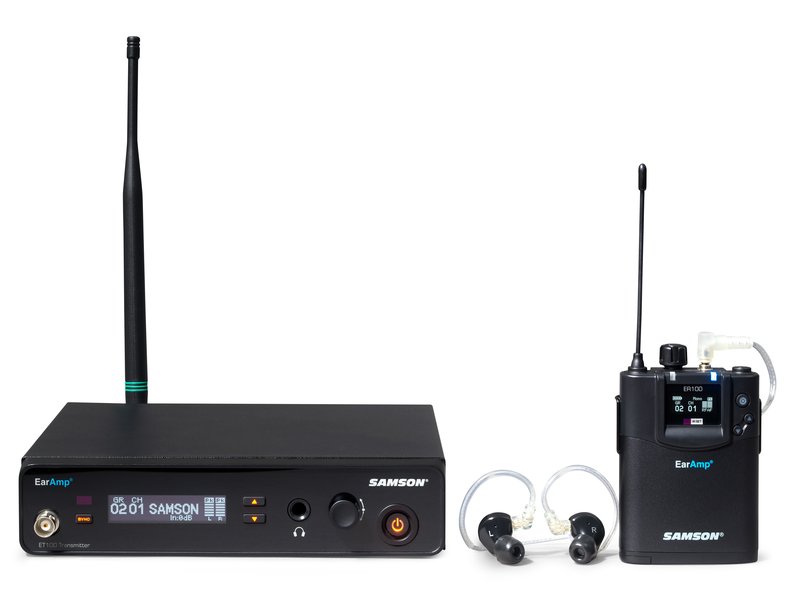
What goes into an IEM setup?
At its core, an IEM system like Samson’s EarAmp® EWM100 has three basic elements:
- A transmitter, which takes signals from your mixer and turns them into radio waves on a particular frequency
- A receiver, which is listening to the appropriate frequency to capture the radio signal and turn it back into audio
- A set of earphones, which plugs into the receiver and carries the signal to your ears
IEMs are most often sold as complete systems with receivers and sometimes transmitters purchased separately. Why would you want this? Aside from having spares for emergencies, the real benefit of having multiple receivers for one transmitter is that your band can get started with wireless IEM with relatively little initial cost and complexity.
While each receiver can only receive signal from one frequency, many receivers can be set to listen to the same one. That way, no matter how simple your mixer might be, you can send a single basic monitor mix to a single transmitter and everyone in the band can hear it in their receivers.
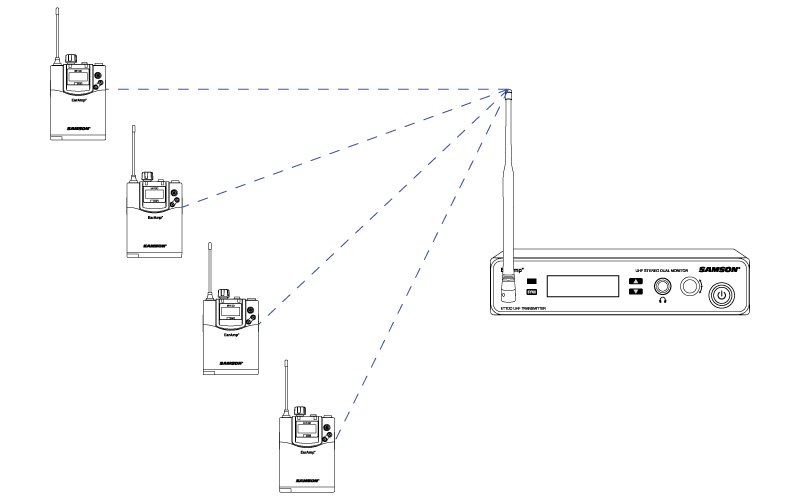
The obvious drawback to this setup is that there's a limit to how different mixes can be, and there's no "more me" option on the receiver for individual performers.
To use a single transmitter to send two independent mixes, from the mixer, send one monitor send to the left input of the transmitter and a second monitor send to the right input of the transmitter. With two receivers paired to the single transmitter, set them to mono and adjust the balance of one all the way to the left to hear Mix 1 and the second all the way to the right to hear Mix 2.
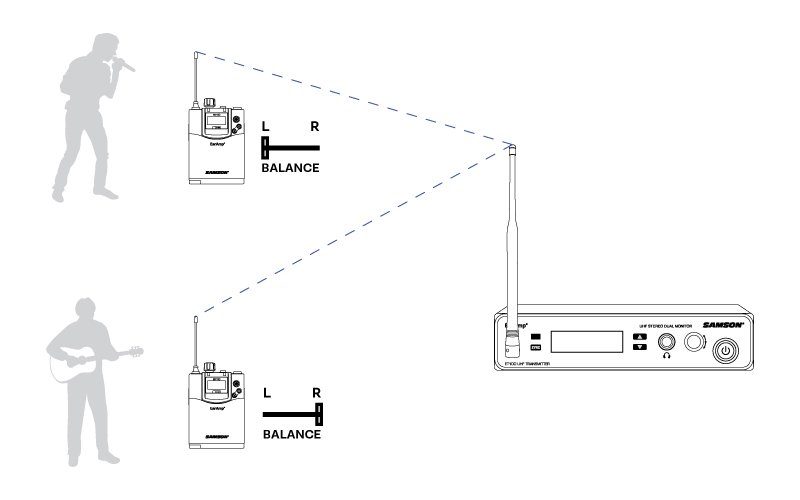
To create a fully customized monitor mix for each band member, you'll need a transmitter for each receiver. You will also need to budget for some other equipment to optimize the process.
Beyond the IEMs – the complete system
To get started, we have to consider the same things we’d have to worry about if we were still using traditional monitor wedges. The critical consideration here is simple: how many band members are we talking about? Which and how many instruments they play, and whether any of them also sing, will hopefully have already been taken into account when the band purchased its main mixer – including allowing for some room to grow.

All of the audio signals from the stage – line level instruments like keyboards, DI boxes for guitars and basses, microphones on drums and amps and vocals – are sent to the Front of House (FoH) mixer as usual. What happens next depends on the size of the venue and the band’s budget, as well as the type of mixer.
In general, all audio signals will run into a rack of splitters, each of which turns one signal into two copies. One set goes to FoH and the other goes to a monitor mixer, allowing for completely independent mixes going to the venue’s PA and to the musicians themselves. Bands playing big venues will always have two separate mixers and two mix engineers to handle all this.
Of course, a lot of bands don’t have the manpower or the budget to run a setup this big. Fortunately, you can do a good job with a smaller mixer if you’re clever – and if the band is willing to compromise a bit on what they can turn up or down in their monitor mixes.
Making it work
Commonly, a monitor mix doesn’t have to be nearly as complicated as the main mix at FoH. For example, it’s unlikely that the drummer will need to hear every single channel in the kit separately mixed, although the bassist might like to hear a bit more kick drum on its own.
Most mixers will allow you to create submixes using channel groups. You’ll then use aux sends to create the individual submixes. These should be pre-fader, so that using the main faders to control the sound going to the PA won’t affect the monitor mix levels.
Modern digital mixers can simplify this process a great deal. They can often support multiple monitor mixes with individual outputs that can connect to your IEM transmitters. With these mixes being easily adjustable and recallable on the same mixer that you use to do FoH mixing, your setup can be both smaller and more flexible.
That being said, though, try to resist the temptation to create a special monitor mix for each song in the set! It’s jarring to have your monitor mix constantly changing; you’ll want to get a good general monitor mix in place, save it, and leave it alone.
Two channels doesn’t necessarily mean stereo
Note that all IEM receivers can work in stereo, but you have the option to send and/or receive signals in mono. This can be very useful sometimes.
First of all, consider carefully if you really need a full stereo mix in your monitors. Some instruments benefit from stereo, such as keyboards or a full drum mix, but translating the spatialization of a stereo mix can be tricky, especially since band members facing the audience will be hearing everything in reverse with respect to what audience members are hearing facing the stage.
Working in mono allows players to focus on relative levels rather than spatial cues. As discussed earlier, if you’re still in the process of building your system, you can build two separate monitor mixes, pan them hard left and hard right, and use one transmitter to send the two mono mixes to two different receivers.
Other features – from fun to vital
Depending on the model, IEM transmitters and receivers may have other features built in. For example, the ER100 receiver that comes with the EarAmp system has a high EQ shelf for rolling off strident frequencies, a stereo balance control, and mono/stereo operation mode controls.
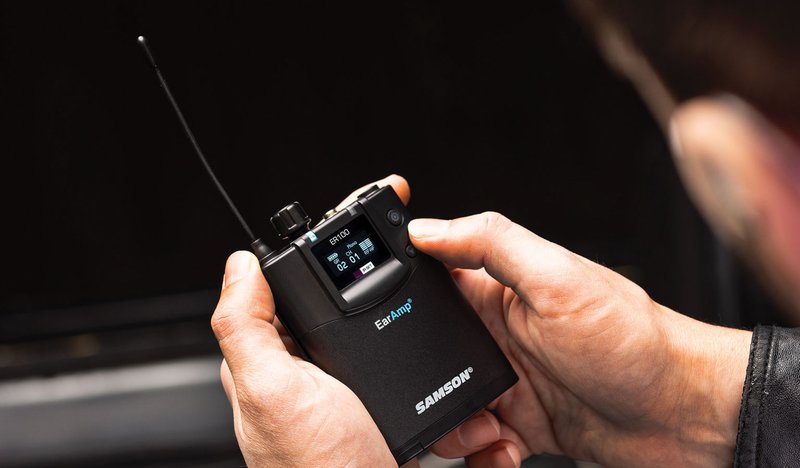
However, there’s one other feature that’s critical to your safety: a limiter. Because IEMs are firing sound into your ear canals, sudden loud noises can be extremely painful if not damaging. The limiter prevents these sudden spikes from getting through to your earphones, protecting your hearing.
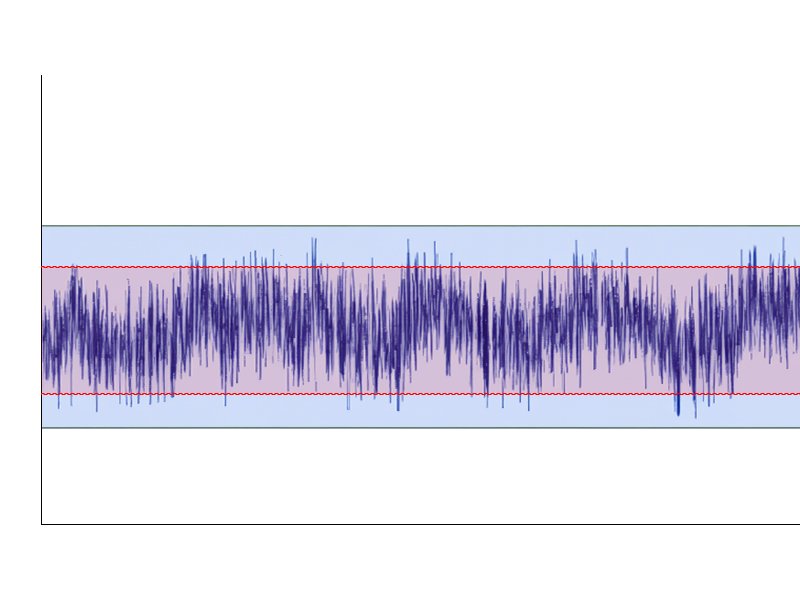
Touching up your sound
While it’s perfectly fine to set up a mix with just the instruments’ sounds as they’re coming off the stage, sometimes you can improve a band’s performance by adding a little something in the monitors.
One of the most common add-ons is “confidence reverb”, a small amount of reverb added to the vocalist’s mic to make it sound richer and more impressive. Nothing can kill a singer’s confidence like hearing themselves in the monitors, dry and flat! However, be careful with adding too much, as excessive reverb can make it hard for a vocalist to stay on pitch.
Other instruments may or may not benefit from this as well. Communication between the band and the engineer is key to figuring out what works best.
One more mic
If possible, you should consider having a spare mic channel to feed into the monitors along with the rest of the mix. Connect this channel to an omni microphone placed somewhere in the venue, perhaps near FoH or just somewhere on stage near your stage box.
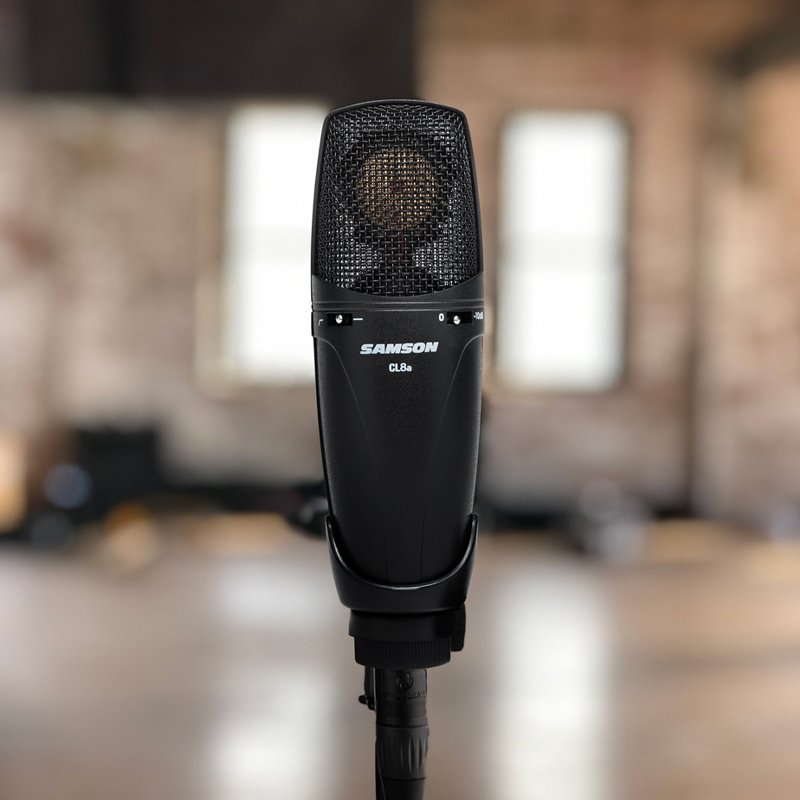
Why would you want this? It’s actually a matter of the musicians’ comfort. Some people have a lot of trouble using IEMs when they can’t hear the sound of the venue at all, except in a distant and muffled way through the earphones. It makes them feel isolated and not in tune with the other musicians or the audience.
By adding in a little bit of venue ambience with the monitor signal, the mix feels more live and present, which can help you perform better. Some players might not want it; others may spend money on earphones that are designed to let some ambient sound through automatically… but it’s a great option to have for everyone else.

At the venue
Long before you go onstage or set up at FoH, you should troubleshoot and test your IEM system thoroughly. The idea is to work out all the bugs before you have an audience waiting for faders-up! That includes working out your monitor mixes (at least as a starting point that you can tweak at the venue) and making sure everyone is hearing everything they need to. As you run through sets, everyone in the band will start to learn what they really need to hear vs. what they think they want to hear.
One thing you will absolutely have to check at the venue, however, is which frequencies your IEMs will be using. You’ll use the monitor system’s scanning capability to find usable groups of frequency channels that aren’t already being used by other transmitters in the area. If you have to do this yourself, consult your owner’s manual for a walkthrough on how this is done for your particular system. Bigger venues will often have a dedicated sound tech whose job it is to scan for available frequencies and set up preset groups so every receiver is hearing what it must.
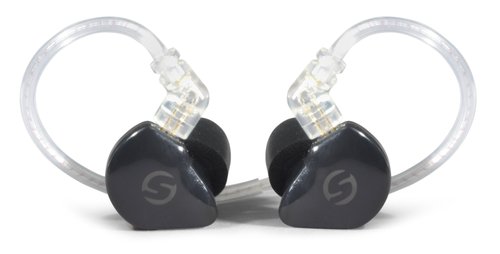
Choosing earphones
The last step from the mixer to your ears is what’s in your ears – the earphones. Choosing in-ear phones for stage use is largely a matter of personal preference, but there are a few things to keep in mind when making your choice.
You’ll need an earphone that is both comfortable for long wear and properly isolating. This means taking time… hours, if necessary… long before showtime, to determine precisely which set of eartips gives you the best fit. Loose fit means poor isolation and the danger of slippage and even having them fall out, while overly tight fit will cause discomfort in long use. Some people like rubber eartips, while others prefer the compressible foam tips that expand to form a tight seal.
Choose an earphone that either gives you a nice frequency response for the whole mix, or which emphasizes frequencies that are particularly important for you to hear clearly on stage. It is quite common, for example, for drummers and bassists to use earphones with accentuated bass response.
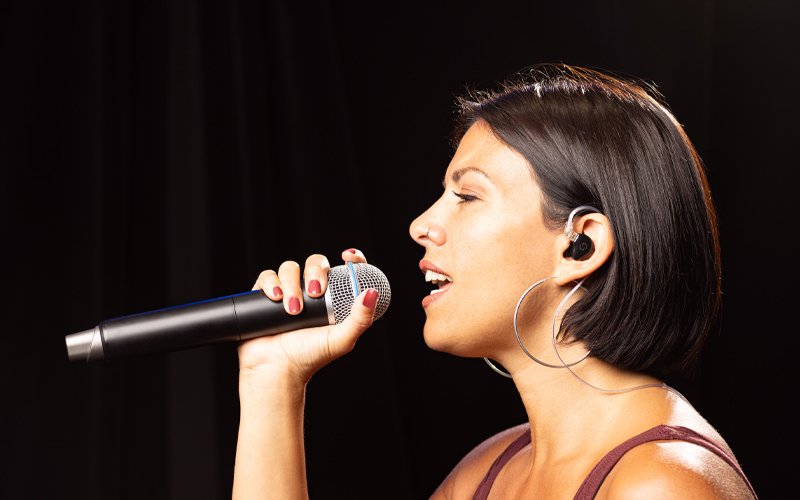
Some listeners will be more picky than others about the type and quality of earphones they use. Some users might spend far more on their earphones than on the transmitter/receiver electronics, and fuss over the very best sound quality. Others will be perfectly happy with a good-quality earphone that does its job with no fuss.
Sometimes, wireless IEM systems will come bundled with a set of earphones for each receiver. These are chosen by the manufacturer to be a good value, giving users a reliable starting point for using their IEMs. A great example of this is the Zi150 earphones that come with every EarAmp receiver. They come with multiple sizes of rubber and foam eartips so they’re easy to custom-fit to your needs, and they provide excellent sound quality as well.
Just remember: IEMs won’t function properly if you wear only one at a time. It’s tempting to leave one earphone out so you can hear around you, but you lose pretty much every advantage they have if you do. Use that ambient mic to hear the world around you – that’s what it’s there for.
Listen up!
Thanks to modern systems like the Samson EarAmp, wireless in-ear monitoring is now available to anyone who wants to get the wedges off the stage and play with better sound, more nuance, and safer acoustics. It’s time to put your monitor mixes on the air!
